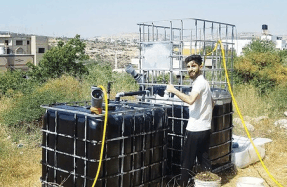Build Your Own Brooder

I’ve used several homemade brooders for brooding and raising quail over the years. Storage tote models work well, especially if you’re just starting out. After brooding several generations of chicks, though, I decided to design a sturdy, durable brooder guided by the experience I’d had with other setups. In designing this homemade brooder, I considered ease of access for cleaning, options for heat lamp placement, security from potential predators, and, of course, price. After buying new lumber, hardware cloth, and paint, the project cost about $100. However, repurposing or sourcing used lumber, hardware cloth, and paint would greatly reduce this cost.
Before constructing the brooder, there are some details regarding materials you should consider. While cedar boards might seem tempting, this aromatic wood isn’t suitable for quail or other fowl. It can cause respiratory problems and is best avoided. I would also strongly discourage using treated lumber. I chose to use both PVC-coated hardware cloth and galvanized hardware cloth. I envisioned the heat lamp resting directly on the hardware cloth on the lid in the early days of brooding to keep the chicks warm, and I wanted to avoid direct contact between
You’re reading a preview, subscribe to read more.
Start your free 30 days



